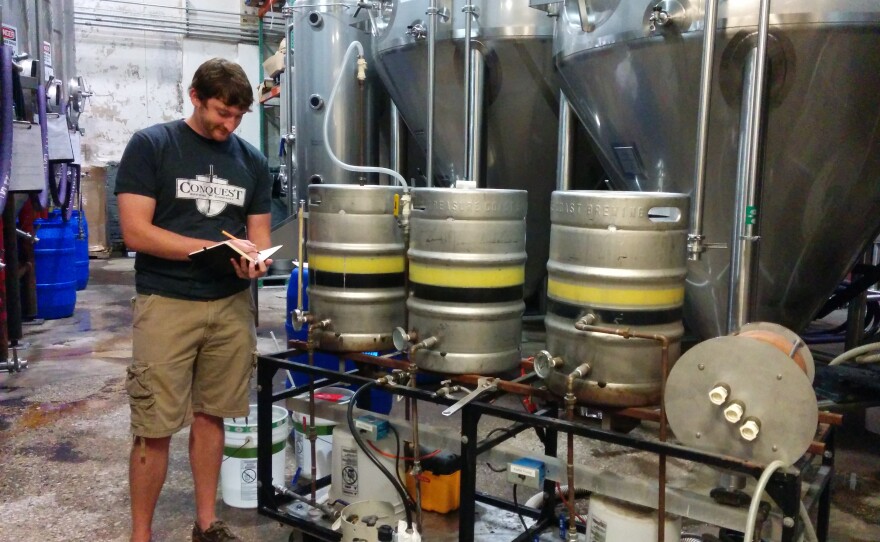A UWM professor has teamed up with Milwaukee’s Lakefront Brewery to recreate an Iron Age brew, inspired by evidence her team uncovered in an archaeological dig.
It’s one thing to appreciate a 20-year-old fine wine, it is something else to brew up a 2,500-year-old alcoholic beverage.

While sifting through the remains of an Iron Age burial plot dating from 400 to 450 B.C. in what is today Germany, Professor Bettina Arnold and others uncovered a cauldron that contained remnants of an alcohol brewed and buried with the deceased.
"We actually were able, ultimately, to derive at least some sense of what the contents were in a bronze cauldron," says the anthropology and archaeology professor. She says the cauldron actually contained about 14 liters of fairly high quality liquid.
A paleo botanist then analyzed the contents and shared a basic idea of the recipe. “The honey, which is definitely present...and then as a bittering and preservative agent – not hops…but meadowsweet,” Arnold explains. Mint was also uncovered in the brew.

The alcohol in the vessel is believed to a braggot.
"A braggot is a blend of barley and honey as the two sugar ingredients to create the beverage," says Chad Sheridan, a cellarmaster at Lakefront Brewery.
He was pulled into the project because his background in home brewing meads and braggots. Besides yeast, the brew really only contains four ingredients: barley, honey, mint, and meadowsweet.
Arnold says it's actually quite fortuitous that they were able to recreate this recipe. "Luckily for us, they didn't just send people off to the afterlife with [swords and spears], they also sent them off with the actual beverage. It's a BYOB afterlife, you know? You have to be able to sort of throw a party when you get there."
For thousands of years, alcohol has played a vital role in cultures around the world. During the Iron Age, as it is today, alcohol was used as a social lubricant and it was also used to mark special events, like inaugurations, weddings, and in this case, burials.

"Alcohol's a really important part of ritual. It helps us kind of pay attention to a specific moment in time," says John Driscoll. He’s an anthropology PhD student specializing in the history and archaeology of fermented beverages.
"So if you take the example of a toast. Everyone raises their glasses, they drink a little bit of the alcoholic beverage and it makes everyone pay attention to that specific moment, which helps them remember it in the future,” he says.
The group will discuss the project and the braggot will be available to taste Saturday afternoon, October 22, as part of the 6th Annual Wisconsin Science Festival.
And, this recreated brew is hopefully the first attempt of many, Arnold notes. UWM’s College of Letters and Science is developing a program on the culture and science of fermentation. Eventually, she says, she will be developing a course where they will brew up different beverages based upon archaeological evidence.









